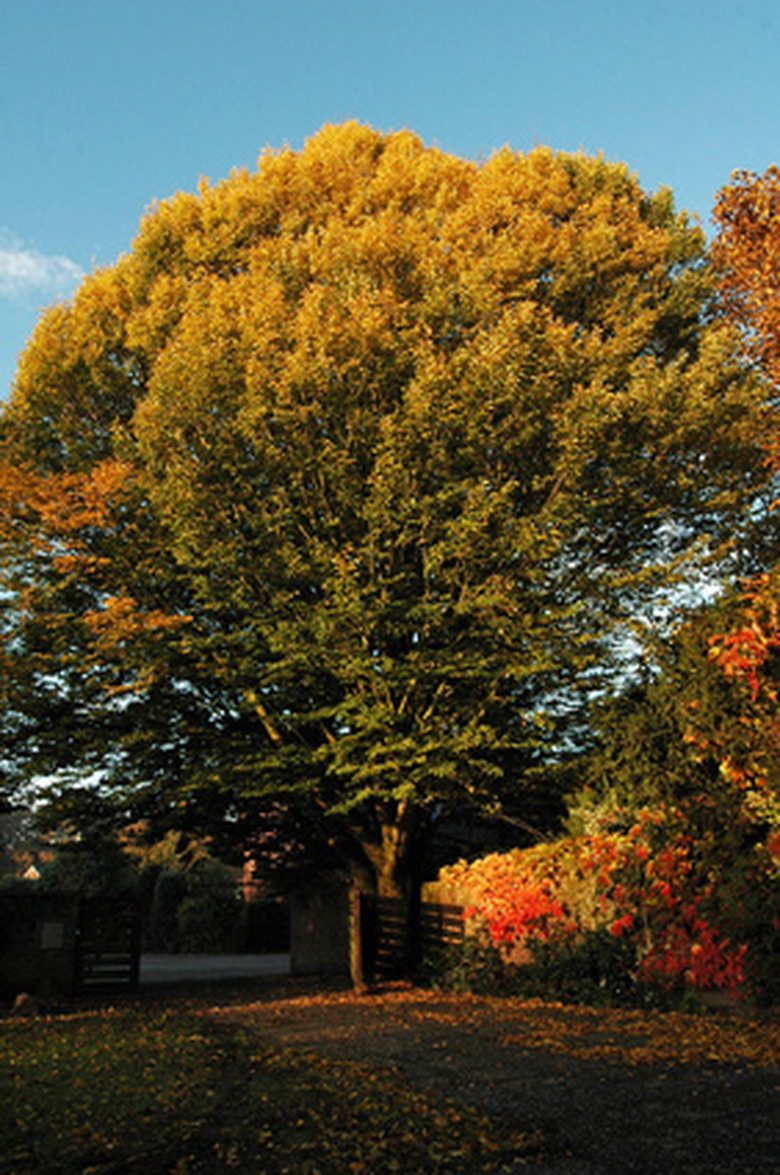Information On The Root System Of Beech Trees
Impressive in stature and beauty, beech trees (Fagus spp.) grace woodlands, become spectacular shade trees for large lawns and even make tall hedgerows. As with all trees, protecting the roots from damage as well as providing a soil environment conducive for healthy root growth extends vigor and life. Grow beech trees in moist, well-draining soils rich in organic matter. All species tend to grow well in USDA Hardiness Zones 4 through 8.
Root Zone
Purdue University points out what most people fail to realize: that most trees grow many of their roots in the top 4 to 8 inches of soil, where warmth, moisture and nutrients abound. Moreover, the root zone extends well beyond the edges of the branches. As a general guideline, the root zone covers a distance two to four times beyond the distance of the tree's canopy.
- Impressive in stature and beauty, beech trees (Fagus spp.)
- Purdue University points out what most people fail to realize: that most trees grow many of their roots in the top 4 to 8 inches of soil, where warmth, moisture and nutrients abound.
Depth
While the majority of roots grow in the top 2 feet of the soil, the deepest structural and anchoring ones do not penetrate deeper than 3 to 7 feet, according to Colorado State University experts. Root functions include anchorage, water and mineral conduction, and food and water storage. Feeder roots, about 1/16 inch in diameter, constitute the major portion of the root system's surface area. These smaller roots grow outward and predominantly upward from the large roots near the soil surface. The major function of feeder roots is the absorption of water and minerals. Under normal conditions, feeder roots die and are replaced on a regular basis.
Concerns
One of the biggest killers of urban trees is soil compaction. Soil compaction restricts water and oxygen uptake by roots and is associated with roads, parking lots, foot traffic, construction equipment and livestock. Changes in soil depth around beeches also cause injury to root systems. The addition of only 4 to 6 inches of soil over a root zone drastically reduces the amount of oxygen and water available to the roots. Excessively dry soil also causes abortion of feeder roots. Any stress on the beech tree increases susceptibility to insect pests or fungal diseases that further weaken and threaten it.
- While the majority of roots grow in the top 2 feet of the soil, the deepest structural and anchoring ones do not penetrate deeper than 3 to 7 feet, according to Colorado State University experts.
- The addition of only 4 to 6 inches of soil over a root zone drastically reduces the amount of oxygen and water available to the roots.
Case Study
In the 1990s, the impressive beech tree allees at Planting Fields Arboretum State Historic Park, the former Gold Coast-era estate of William Robertson Coe, began losing vigor. Assistant Director Vincent Simeone noted stresses on the mature trees from a combination of past drought and passenger-car soil compaction. The vigor of the trees improved after scheduled applications of organic mulch and limited soil tillage. This was meant to encourage new surface roots where soils were compacted and where both vehicular traffic over root zones and excessive pedestrian traffic occurred. While improved tree growth followed these treatments and policies, the oldest beech tree specimens still declined from disease. This provided insight into the importance of diminishing stress on beeches to maintain vigor and to protect the root zone.
Recommendations
Keep the large root zone of all beech trees protected with a copious and nutritious layer of organic mulch, 3 to 5 inches deep. This keeps summer soil temperatures cooler, retains soil moisture and helps shield the soil from compaction from foot traffic as well as light maintenance equipment. Extending the mulch layer well beyond the drip line, the farthest reaches of the branches, protects the youngest, more tender root tips growing into new soil reaches. Keep mature beech trees well watered in times of prolonged drought, and avoid placing heavy objects or conducting soil-moving projects in close proximity to desirable beech trees.
- In the 1990s, the impressive beech tree allees at Planting Fields Arboretum State Historic Park, the former Gold Coast-era estate of William Robertson Coe, began losing vigor.
- Keep mature beech trees well watered in times of prolonged drought, and avoid placing heavy objects or conducting soil-moving projects in close proximity to desirable beech trees.
